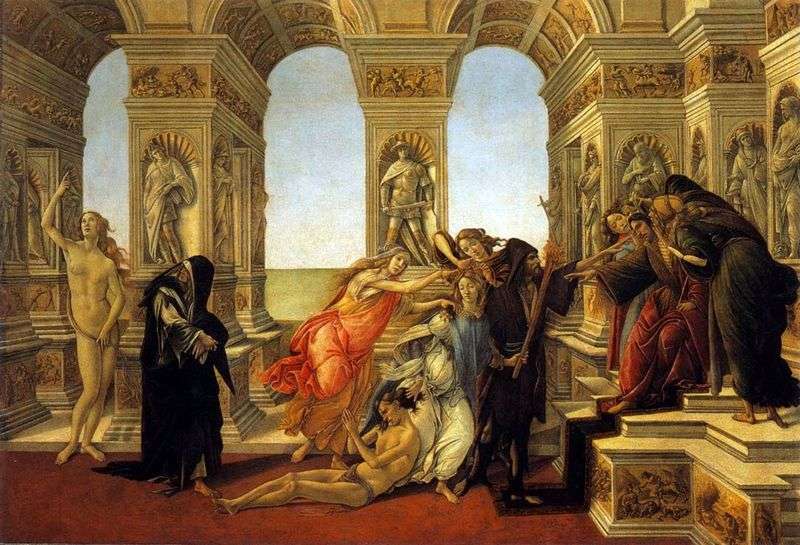
Painting by artist Sandro Botticelli “Slander”. The size of the master’s work is 62 x 91 cm, wood, tempera. At a time when the Florentines were under the hypnotic influence of Savonarola’s sermons, only did Botticelli give himself religious painting? Facts speak of another. Botticelli maintained strong ties with his patron Lorenzo di Pierfranchesko, decorated his villas, wrote for him “some things.” . The artist maintained relations with a number of other adherents of medical culture.
By the middle of the 1490s, antique images were not completely rejected by them, although the mood and artistic language of the master changed. Religious and secular trends continued to co-exist in the painting of the artist Sandro Botticelli.
The painting is written for Antonio Senyi, erudite and friend Botticelli. Her plot dates back to Lucian’s treatise “On Defamation,” in which, in particular, a picture of the ancient Greek artist Apelles is described; The plot is also set forth in Three Books on Painting by Alberti, who advises artists to find themes from poets and orators, especially the ancient ones. One of the first Renaissance masters embodied this “history” of Botticelli. Its plot is as follows. Seated on the throne, King Midas whispered in his donkey ears, two insidious figures – Ignorance and Suspicion. A slander – a beautiful girl with the guise of innocence – and her instigator Envy drags to the king by the hair of the accused.
Next to the Slander are the constant companions – Insidiousness and Deceit, who support it and exalt it: one sprinkles with flowers, the other weaves a pearl thread into the hair. In the distance, two more figures appear: Repentance, an old woman “dressed in funerary clothes,” and a naked Truth that looks up and gestures hands.
In combination with a heap of figures on the right side of the composition, these characters seem especially lonely. Botticelli permeates the image with a nervous, as it were, “speaking” pulse. The line, which lost its former airiness, develops impetuously and vigorously, marking significant intervals in the construction. The images of mythological characters in the artist’s painting bear the imprint of their evil or virtuous essence.
Allegory of the innocently slandered contains an eternal meaning, but it is associated with Florence in the late 15th century, a time of suspicion, denunciations and cruelty in the name of “truth.” However, Botticelli treats the actual antique story. The scene takes place against a background of shining marble of fantastic architecture. It is decorated with statues and bas-reliefs, which in their “liveliness” are ready to get off the wall. In the depiction of characters, he uses the motifs of his early, “pagan” painting, but the forms have now become dry and almost lifeless.
Feeling approaching crisis – the rejection of the beauty of the world, which will soon come to the artist. All the characters in the picture are expressive. The artist conveyed in each of them the essence of different moral qualities. King Midas, whom we see on the throne, is a bad judge: according to the ancient myth, he preferred the game of Apollo and Pan to a musical match for which Apollo rewarded him with donkey ears. So in the “Slander”, listening to the incantations of Ignorance and Suspicion, two women with evil faces and artificial serpentine grimaces, he extends a weak, uncertain gesture toward the accused. The figures of Truth and Repentance are addressed to the mind of the viewer.
In their interpretation, the artist uses the language of eloquence, rhetoric. They are called to convey the idea of the value of Truth, which is often neglected in the world. The artist inhabited the throne room of King Midas with many figures and scenes from both pagan and Christian culture. This is a kind of museum of subjects on moral themes – from the myth of Prometheus to the Old Testament prophets and saints. Botticelli enthusiastically surrenders to the interpretation of these motifs, which formed the repertoire of Renaissance art. Sculptural figures and scenes are lifestyles, as if they are capable of leading a separate existence in an imaginary space.
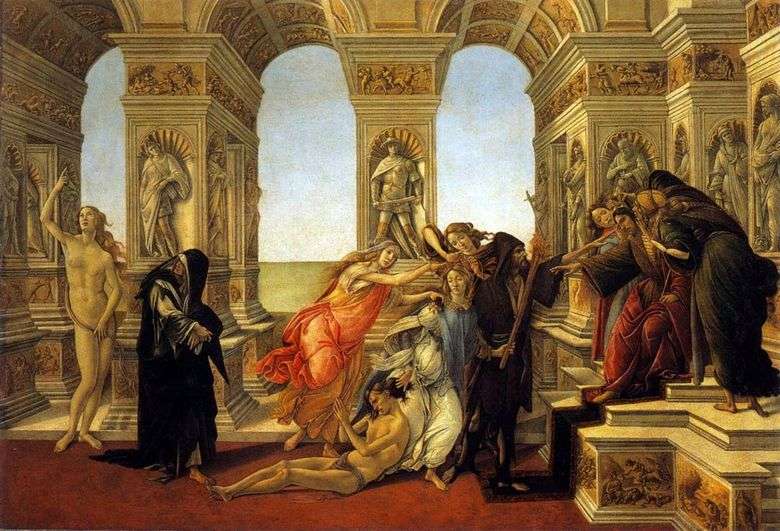 Calumnia de los Apelles – Sandro Botticelli
Calumnia de los Apelles – Sandro Botticelli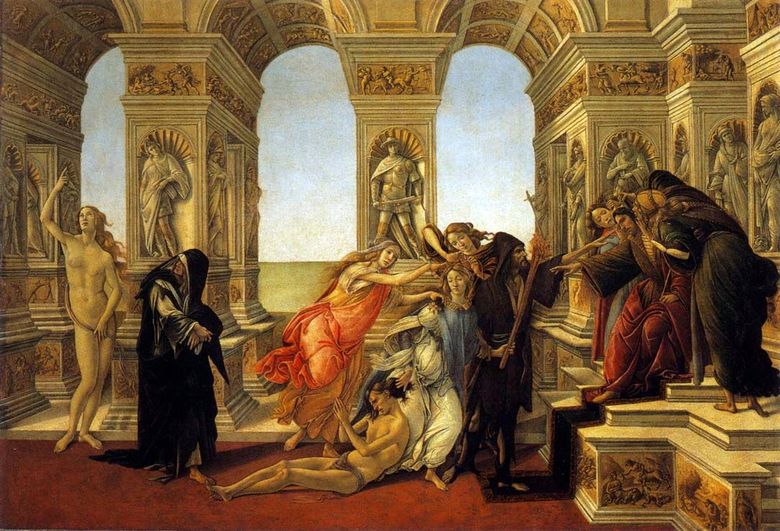 Apelle calomnie – Sandro Botticelli
Apelle calomnie – Sandro Botticelli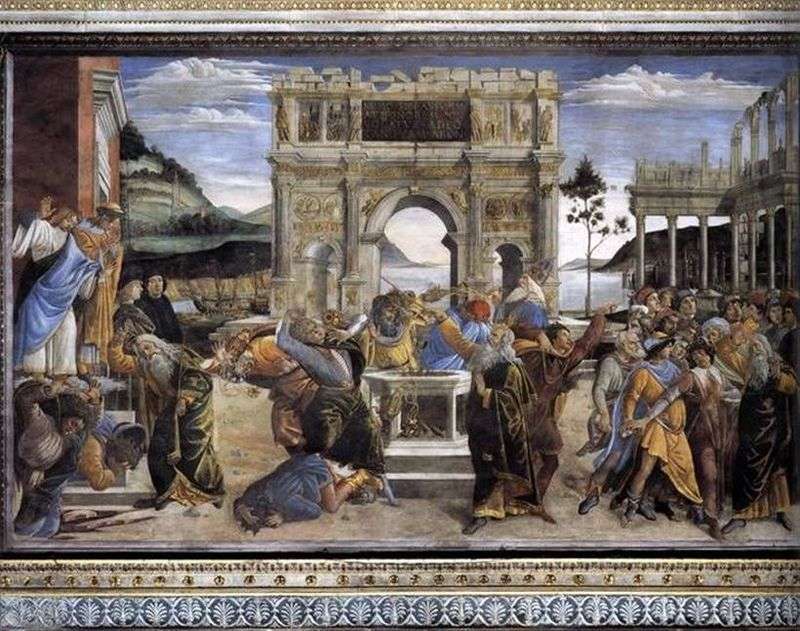 Punishment of Korea Dafan and Abiron by Sandro Botticelli
Punishment of Korea Dafan and Abiron by Sandro Botticelli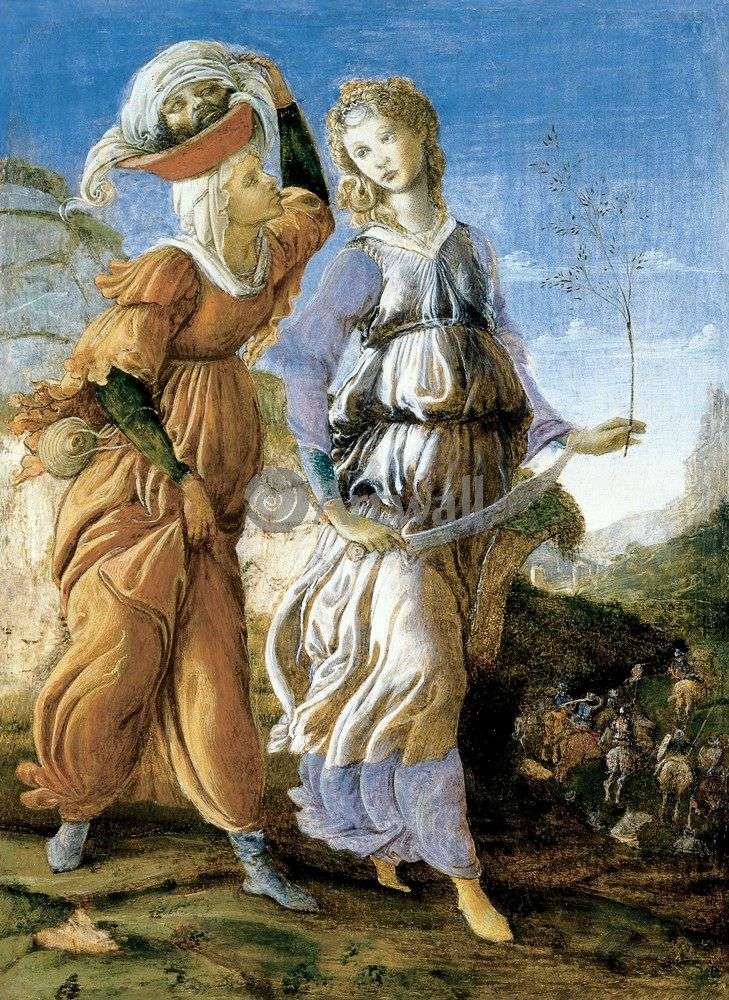 Return of Judith to Vetiluy by Sandro Botticelli
Return of Judith to Vetiluy by Sandro Botticelli Primavera (Spring) by Sandro Botticelli
Primavera (Spring) by Sandro Botticelli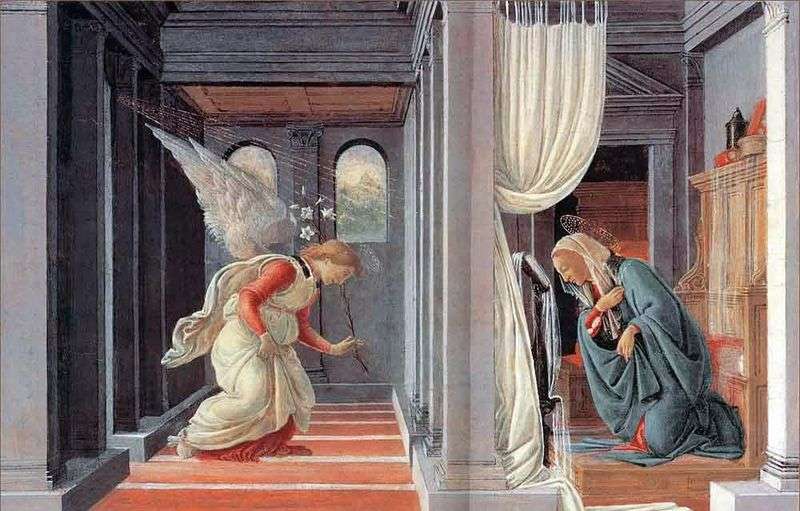 Annunciation by Sandro Botticelli
Annunciation by Sandro Botticelli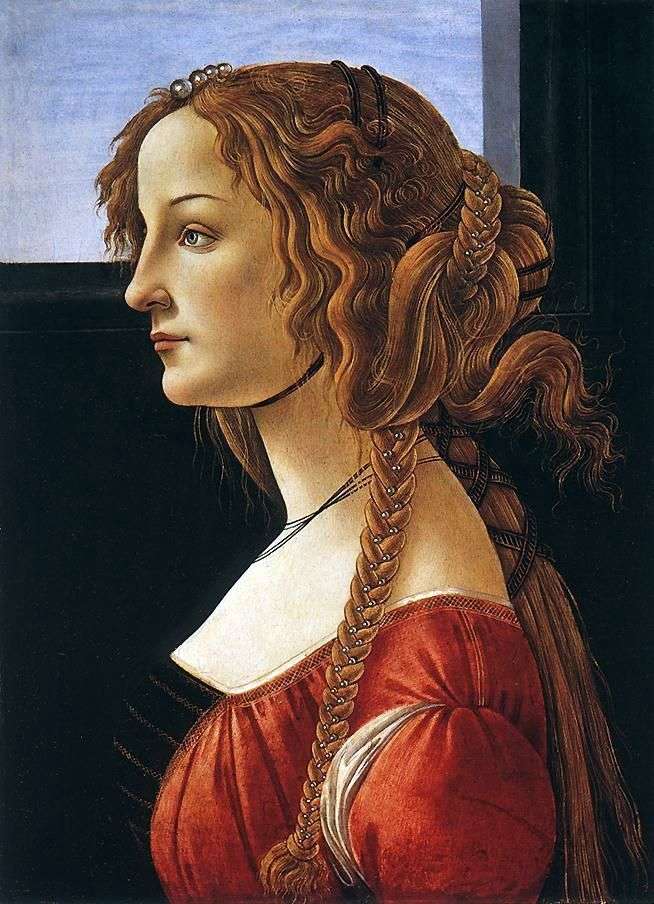 Portrait of Simonetta Vespucci by Sandro Botticelli
Portrait of Simonetta Vespucci by Sandro Botticelli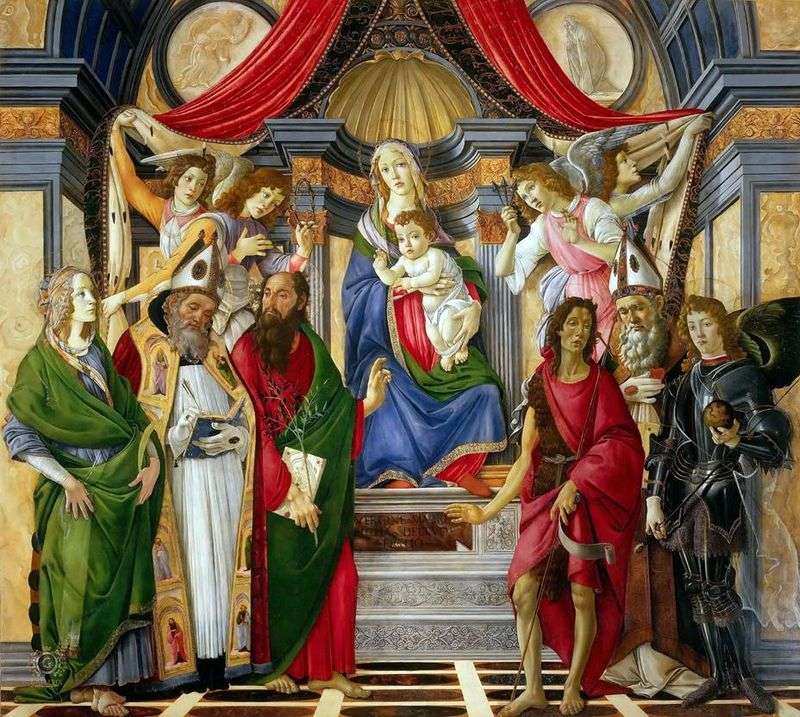 The Altar of St. Barnaby by Sandro Botticelli
The Altar of St. Barnaby by Sandro Botticelli